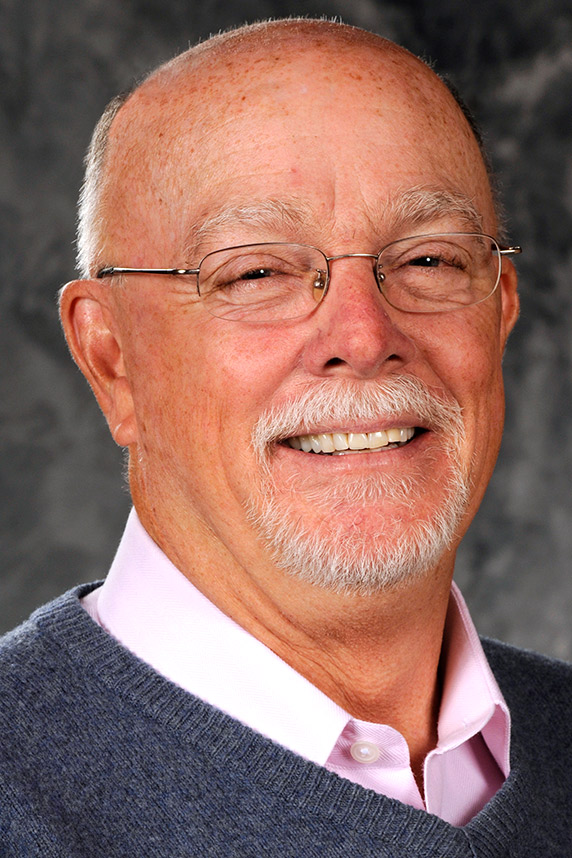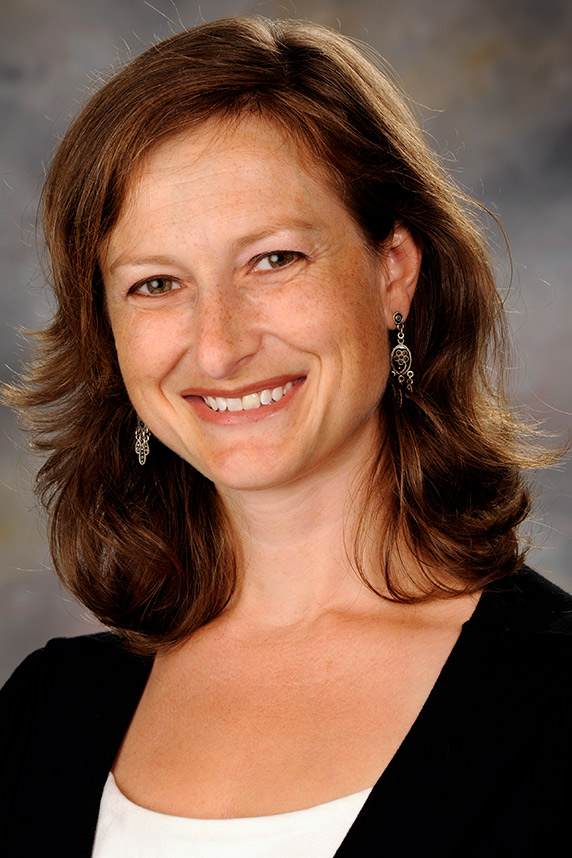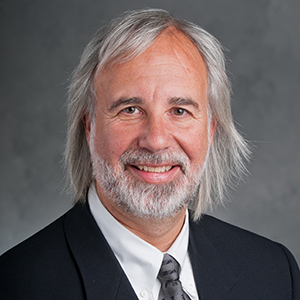 Rick Woychik, Ph.D., directs NIEHS and the National Toxicology Program. (Image courtesy of NIEHS)
Rick Woychik, Ph.D., directs NIEHS and the National Toxicology Program. (Image courtesy of NIEHS)This year marks the 35th anniversary of the NIEHS Superfund Research Program (SRP), and there is much to celebrate with that milestone. Since the late 1980s, the program has supported solutions-focused research into environmental exposures ranging from arsenic and lead to toxic metals and, more recently, per- and polyfluoroalkyl substances (PFAS).
The SRP has improved public health by funding innovative research hubs at universities across the country, forging partnerships with communities affected by hazardous substances, and training early-career scientists in state-of-the-art approaches. The tools, technologies, and insights gained from those efforts have spurred innovation and promoted greater well-being.
Recently, I spoke with Bill Suk, Ph.D., who directs the program, and SRP Health Scientist Administrator Heather Henry, Ph.D., to learn more about emerging research challenges the program is tackling. Examples include how to effectively clean up PFAS contamination, promote good nutrition to counter the effects of pollutants, and prevent toxic metals from impacting children's health, to name just a few.
In addition, I asked Suk and Henry about what inspired them to pursue careers at the intersection of research and public health. I greatly enjoyed talking with them, and I left the conversation inspired by their fundamental mission, which is to turn environmental health sciences research into real-world solutions for communities seeking to avoid harmful exposures.
 Suk has led the SRP since its inception in 1987. He is head of the NIEHS Hazardous Substances Research Branch. (Photo courtesy of Steve McCaw / NIEHS)
Suk has led the SRP since its inception in 1987. He is head of the NIEHS Hazardous Substances Research Branch. (Photo courtesy of Steve McCaw / NIEHS)Multidisciplinary research, community engagement
Rick Woychik: Can you provide background information about SRP for Environmental Factor readers? What do you think makes the program so unique?
Bill Suk: The SRP was established under the Superfund Amendments and Reauthorization Act of 1986. When the program launched the following year, we had several mandates, such as assessing health risks caused by hazardous substances and improving detection of those agents. But what makes us unique is our fourth mandate, which is to develop basic biological, chemical, and physical methods to reduce the amount and toxicity of hazardous substances.
Whereas much environmental health sciences research shows how exposure to various chemicals may affect human biology, our program puts a positive spin on things. Our goal is to in fact reduce exposure to those agents through technology, interactions with communities, and specialized educational programs, among other approaches. To achieve that aim, we bridge silos and bring together experts from a variety of disciplines to answer scientific questions that cannot be addressed by one research domain alone.
Heather Henry: One way that SRP bridges those silos and advances collaboration is by supporting nearly two dozen academic centers across the country. They address a variety of research challenges, such as assessing metals exposures on tribal lands; identifying biological signs of exposures, called biomarkers; and understanding how early-life exposures to substances such as pesticides and flame retardants can affect health later in life. Beyond advancing important research in those and many other areas, our centers engage impacted communities.
Residents learn about ways to reduce exposures and improve their health, and scientists enhance their study designs by understanding what matters most to such communities and gaining local knowledge. Each center has a community engagement core [CEC], and tools and resources they create are leveraged across SRP so that communities who may be experiencing similar health challenges can benefit. A big shoutout goes to the NIEHS Partnerships for Environmental Public Health program, which has helped to share these materials with wider audiences.
Among other services, CECs provide technical advice about harmful impacts of contaminants in water, soil, and air. They also help communities interpret data on exposures, such as through the Digital Exposure Report-Back Interface. Also, North Carolina ENVIROSCAN is a mapping tool that helps users visualize important information on pollution and health vulnerability across socioeconomic strata, which sheds light on issues related to environmental justice and helps people understand their health risks.
Tackling PFAS contamination
RW: The fact that community engagement is woven into the fabric of your program is commendable. It means you are well positioned to translate scientific knowledge into action, which is part of the NIEHS strategic plan, and empower individuals to improve their health.
Can you expand on SRP efforts related to PFAS contamination, which has become an increasingly important topic among the public? Heather, I’ll start with you, as you have taken a leadership role in this area and are representing NIEHS on a PFAS-related working group that is part of the White House Office of Science and Technology Policy.
 Henry joined SRP in 2006, and she oversees grants involving toxicology, risk assessment, detection technologies, and remediation approaches, among her other efforts. (Photo courtesy of Steve McCaw / NIEHS)
Henry joined SRP in 2006, and she oversees grants involving toxicology, risk assessment, detection technologies, and remediation approaches, among her other efforts. (Photo courtesy of Steve McCaw / NIEHS)HH: SRP grantees engage in the full range of PFAS-related research(https://www.niehs.nih.gov/research/supported/centers/srp/science_digest/2022/3/features/) — exposure assessments, epidemiological studies, creating technology to better detect and clean up the substances, and so forth. They are also developing sophisticated methods to better measure PFAS in humans and the environment. And grantees report back research results and share information about how to reduce exposures, which can inform decision-making at the individual and public health levels.
A recent example of exciting technology that was produced through an SRP small business innovation research grant comes from a company called CycloPure, Inc. Early funding from SRP helped them develop a low-cost PFAS filter that can be attached to a Brita pitcher, helping families reduce exposure to the substances in drinking water. Many other SRP grantees are conducting research and building new technologies related to PFAS, and major advances are on the horizon.
I would be remiss if I did not mention the 3rd National PFAS Meeting, which was held recently in Wilmington, North Carolina, and organized in part by SRP-funded centers, including North Carolina State University’s Center for Environmental and Health Effects of PFAS, the Sources, Transport, Exposure, and Effects of PFAS Center at the University of Rhode Island, and the Puerto Rico Testsite for Exploring Contamination Threats program at Northeastern University. The meeting brought together community groups and researchers to talk about the challenges involved in PFAS contamination, as well as solutions to that contamination, and it is just one example of SRP involvement in this critical area.
BS: At that meeting, a U.S. Environmental Protection Agency official announced new drinking water health advisories related to PFAS. Although the advisories are nonbinding, they indicate that moving forward, we should expect increased demand for both tighter drinking water standards and technologies that will help people effectively treat their water supplies.
SRP is doing everything it can to spur progress, whether in terms of providing technical expertise to localities about effective cleanup strategies or providing residents with the knowledge they need to make informed health decisions for themselves and their loved ones. And there, I give much credit to our community engagement activities. Our grantees and academic centers have enabled individuals to take steps to reduce exposure to PFAS and improve their well-being, and those individuals’ sense of urgency about this topic is now resonating across the country and around the world.
Training the next generation of scientists
RW: Any final thoughts that you would like share?
BS: One reason I am proud of SRP is that we have incredibly talented and creative folks who develop innovative solutions to complex problems faced by vulnerable communities. For example, our center at the University of Kentucky is shedding light on how good nutrition can protect against exposure to chemicals such as PCBs [polychlorinated biphenyls] and PFAS, and they are working hard to translate their findings among residents affected by pollution.
Finally, I should note that the formal name of our program is the NIEHS Hazardous Substance Basic Research and Training Program. That second part of the equation, training, is one of the most rewarding aspects of our work. As much as I think that our research is outstanding, it is the early-career scientists who receive hands-on, multidisciplinary education through our centers and grant initiatives that make us truly successful. Having spoken with many of them throughout the years, I can say that if they are the future of science, the future of science is in good hands.
HH: I completely agree, and I would add that another point of pride for SRP is how we help individuals take control of their health. Whether it is grantees working in community gardens to prevent uptake of pollutants in fruits and vegetables, ensuring that anglers better understand fish safety advisories, or sharing information about how natural disasters can influence the movement of contaminants, our efforts are all about empowering people and advancing public health.
(Rick Woychik, Ph.D., directs NIEHS and the National Toxicology Program.)









